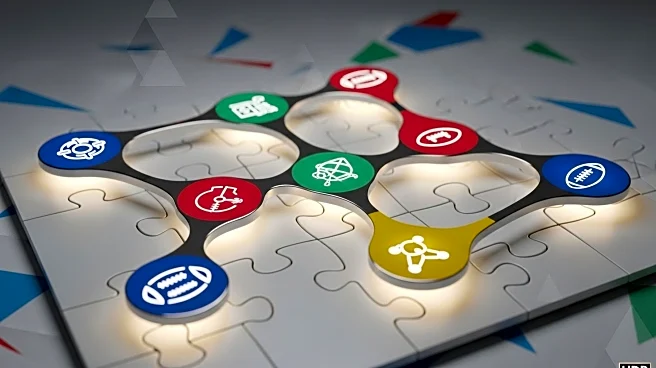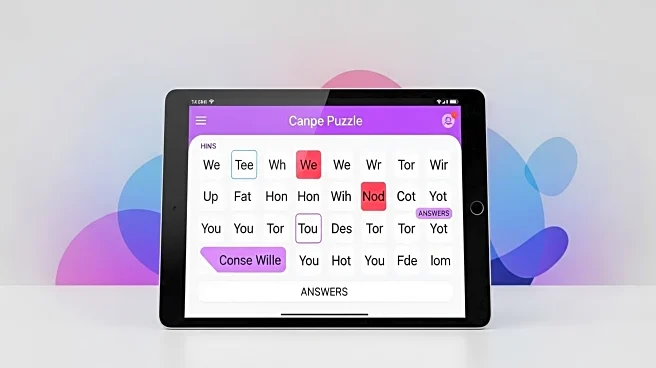What is the story about?
What's Happening?
The New York Times has introduced a puzzle game called 'Connections,' which has been engaging players since its launch in June 2023. The game challenges participants to identify thematic connections among four groups of four words, with a limit of four mistakes allowed. On October 5, 2025, the puzzle featured categories such as gardening, earthquakes, Madonna songs, and types of cars. Players were given hints like 'Things needed for gardening' and 'Things the Queen of Pop sings' to guide them in solving the puzzle. The answers for the day included words like 'soil' for gardening and 'Frozen' for Madonna songs.
Why It's Important?
The introduction of 'Connections' by the New York Times represents a growing trend in media to engage audiences through interactive content. This puzzle not only provides entertainment but also stimulates cognitive skills by challenging players to think critically and make connections between seemingly unrelated words. Such games can enhance the newspaper's appeal to a broader audience, potentially increasing readership and engagement. Additionally, it reflects a shift in traditional media towards incorporating digital and interactive elements to remain relevant in a rapidly evolving media landscape.
What's Next?
As 'Connections' continues to gain popularity, it is likely that the New York Times will expand its offerings of interactive content. This could include more complex puzzles or variations that cater to different interests and skill levels. The success of such games may also encourage other media outlets to develop similar interactive features, further transforming the way audiences engage with news and entertainment content. The ongoing evolution of these puzzles could lead to collaborations with educational institutions or cognitive research organizations to explore their potential benefits in learning and mental agility.
Beyond the Headlines
The success of 'Connections' highlights a broader cultural shift towards gamification in various sectors, including education and corporate training. By integrating game-like elements into everyday activities, organizations can enhance engagement and motivation. This trend also raises questions about the balance between entertainment and information in media, as well as the potential for such games to influence public perception and understanding of complex issues.
AI Generated Content
Do you find this article useful?













